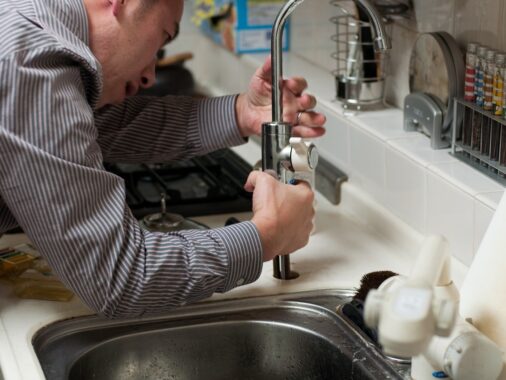Leak detection has become quite critical in the industrial scenario today. Undetected leakage causes significant monetary loss hazards to the environment and often proves detrimental to people’s safety. Advanced techniques developed with advancing technology provide more accurate and quick methods of leak detection. The article discusses some of the most advanced methods in use and their importance in various sectors.
Acoustic Leak Detection
Acoustic Leak detection is one of the most practical and effective techniques for leak detection in pipes or in any pressurised system. The working principle of this method is derived from the noise made by the fluid that is discharging through a crack. Particular detectors, referred to as hydrophones or acoustic microphones, are fitted to the pipeline and are able to detect high-frequency noises that result from leakage.
This method has the advantage of detecting a leakage point with high accuracy. Thus, even small leaks that otherwise could not be identified by other techniques will be detected with the acoustic leak detection systems. However, this technique may be affected by several factors, such as the type of material used for the pipeline, fluid, and external ambient noise.
Thermal Imaging
Thermal imaging is another advanced technology that involves leak detection, especially in the detection of leaks from underground pipelines or insulated systems. This process utilises infrared cameras to detect temperature changes at the earth’s surface, which a leak could cause. Any fluid released from a pipe often creates a temperature difference between that and the surrounding space. These differences can be recorded through thermal imaging cameras to identify the leakage location.
It is especially good at detecting leakage in areas inaccessible to simple methods of detection or where they may prove inefficient. It is also non-intrusive, meaning that leak detection can be done without physically coming into contact with a system. However, it may be impacted by environmental factors such as ambient temperature and wind speed.
Correlation Technology
Correlation technology is much more advanced in leak detection. It makes use of sensors, typically installed at a number of points along a pipeline. Their performance uses the principle of measuring the transit time of a sound wave between two points. In case there is a leak, this wave will reach these sensors at different times. This generates a time difference that permits the determination of the location of the leakage.
This technique is entirely accurate and can work on metal and plastic pipelines. It works very well in detecting the leaks of long pipelines where other methods may need to give an exact measurement. However, correlation technology requires a higher level of expertise in drawing out accurate data, and it also turns out to be costly during the initial setup.
Fiber Optic Sensing
Fibre-optic sensing is a very modern concept in leak detection, one that has undergone tarmac-leap progress in recent years. Fibre optic cables are embedded along a pipeline’s length, which is very sensitive to changes in temperature, strain, and vibration. When the leakage process starts, escaping fluid alters these parameters, which the fibre optic sensors can then pick up.
The main advantage of fibre optic sensing is that the measurement technique can be used in severe environments such as deep-sea pipelines and ultra-high-temperature systems. However, fibre optic systems can be costly in terms of setup and maintenance.
Ultrasonic Testing
Leak detection by high-frequency sound waves is a type of non-destructive testing, which is ultrasonic testing. A method of detecting a defect in which sound waves emitted by an ultrasonic transducer pass through the walls of a pipeline and, on encountering a leak, reflect the transducer differently from a sound wave reflecting from an undamaged part of the pipeline. The reflected waves are then subjected to analysis so as to determine the existence and location of the leak.
The accuracy of ultrasonic testing is high, and it can be run on an extensive range of materials: metals, plastics, and even composites. It is effective at detecting the smallest of leaks within high-pressure systems since the fluid, as it is escaping, will freely produce a quite ultrasonic solid signature. This method, however, requires special equipment and trained personnel and, therefore, finds more critical applications where accuracy overrides cost.
Digital Monitoring and AI Integration
The advent of digital monitoring and artificial intelligence has driven leak detection into a totally different frontier of accuracy and efficiency. State-of-the-art leak detection systems would combine the digital sensor with AI algorithms to monitor pipeline conditions incessantly. This raises the slightest anomaly in pressure, flow rate, or even an acoustic signal that might indicate a leak.
AI-driven systems can process vast reams of data in real time, issuing instant alerts and actionable insights. In addition to this, machine learning algorithms learn from the previous history of leak occurrences; thus, their precision increases over time. Digital monitoring and AI integration, therefore, enhance not only the reliability of leak detection but also reduce manual inspections, thereby reducing operational costs.
Conclusion:
Advances in leak detection technologies have offered more accurate, efficient, and reliable ways for industries to safeguard their operations.
From acoustic leak detection and thermal imaging to fibre optic sensing and artificial intelligence integration, these techniques have revolutionised the scene of leakage detection and management. With such advanced methodologies, businesses can reduce risks, protect the environment, and make their operations safe.
There is only a need to enhance the characteristics of the existing leak detection solutions for different industries. Otherwise, the latter will only grow more complex. By continuing to place themselves in the vanguard of a range of such constituent technologies, firms will be better prepared for what is yet to come.



